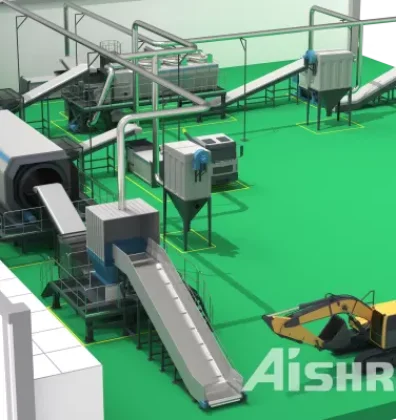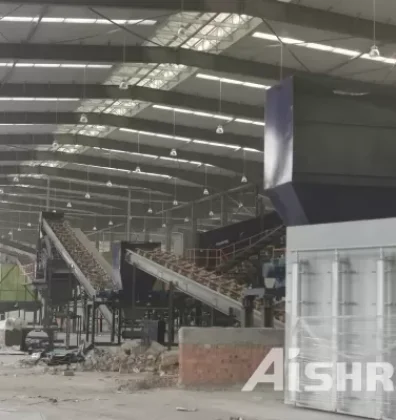A wet pulper is similar in design and operation to a common household blender. In operation, a slurry of about 90 percent water and 10 percent solid waste is placed in the pulper. The interior of the pul per may be lined with protruding hardened impact pins, but often the interior is a smooth surface. A central rotating element (either a disk or a set of blades) spins at high speed (peripheral speed of 5,000 ft/min) forming a vortex or whirlpool in the siurry. Repeated impact of the solids with the rotating element reduces the solid waste to a pulp. Unpulpable iterns, such as rubber tires are bal1istically rejected. Wet pulpers can operate as a batch process or a continuous process. After pulping, the slurry is removed from the pulper; and the majority of the water is removed by squeezing and is reused.
The wet pulper and dry shredding system are not generally interchangeable in application. The wet system requires extensive auxiliary equipment for addition and removal of water and this equipment is not needed for the dry system. Additionally, the wet system is usually designated for a specific resource recovery system such as fiber recovery, whereas dry shredders generally have broader application. Because of its presently 1imited use, the wet pulper will not be discussed further in this document.



